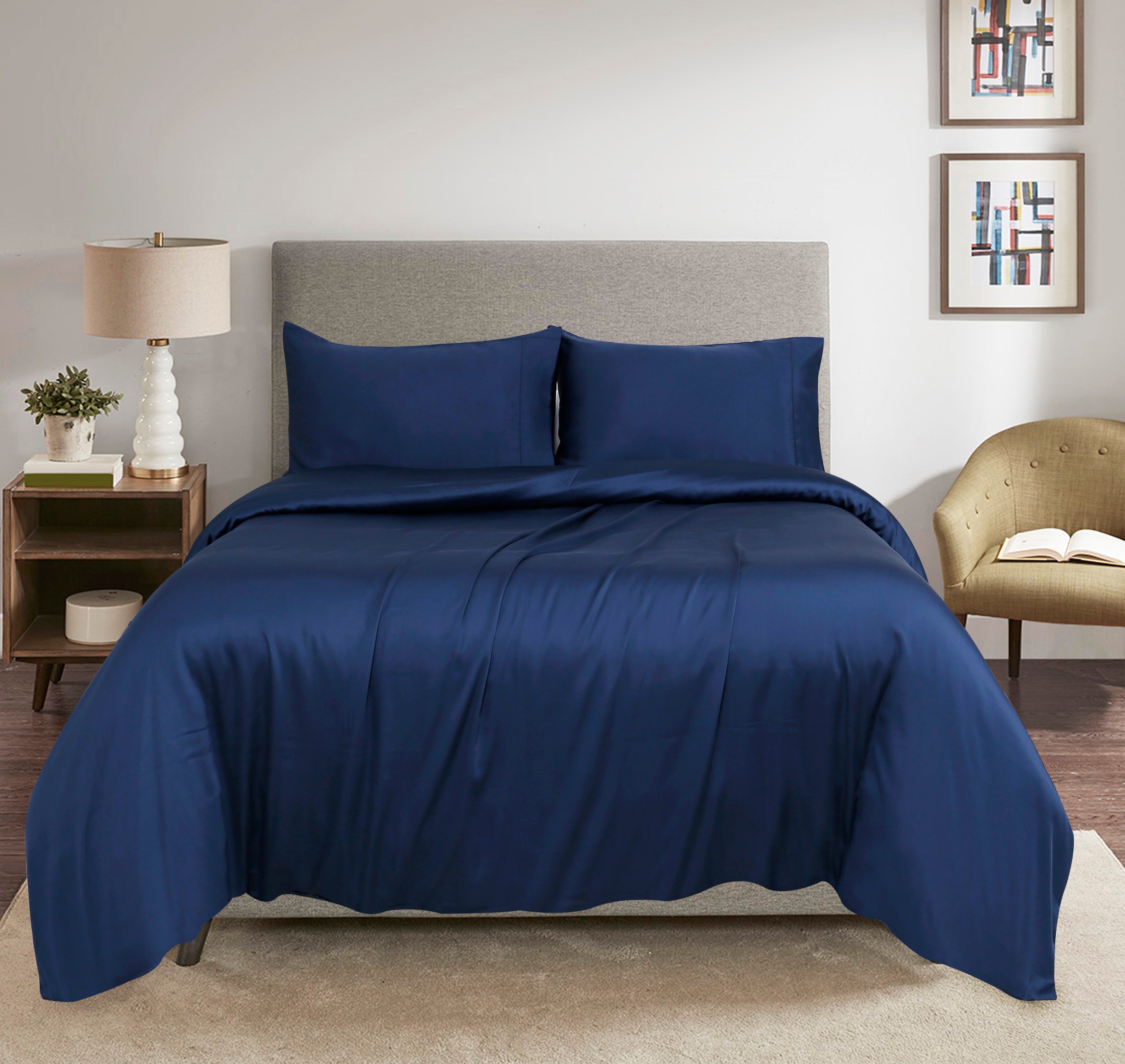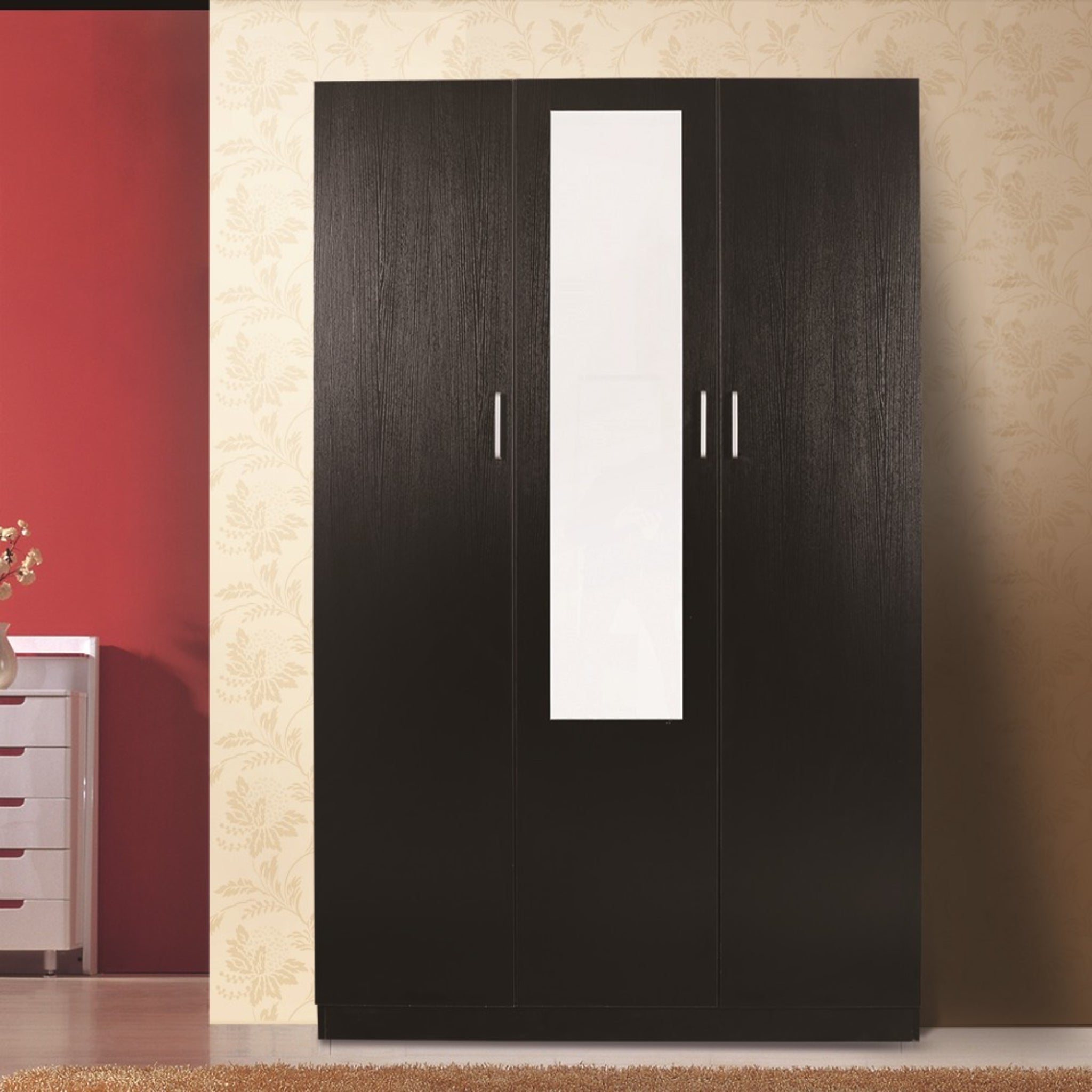If you’re waking up with a sore back, you’re not alone, and your mattress is the most likely culprit. So, what's the quick answer? Most people with back pain find relief on a medium-firm mattress. This sweet spot offers enough sturdiness to support your spine while still having enough give to cushion your body's curves.
Let's walk you through finding the perfect match to end those achy mornings for good.
Your Guide to a Pain-Free Morning
Choosing the right mattress is more than a simple comfort upgrade—it's a real investment in your health, especially if you're dealing with persistent back pain. The "one-size-fits-all" idea just doesn't apply here. Every body is unique, and what feels like sleeping on a cloud to one person can feel like a concrete slab to another.
This guide is designed to cut through the confusion. We'll break down the crucial balance between support (how well the mattress keeps your spine aligned) and comfort (how it relieves pressure on your hips and shoulders). We’ll look at how different materials and constructions can either make or break your sleep, giving you a clear path to finding the best option for you.
Understanding the Australian Context
In Australia, back pain isn't just a minor issue; it's a massive health concern. In fact, nearly four million Australians live with persistent back pain, making it one of the country's most common reasons for disability. This has naturally shaped what people look for in a mattress, fuelling the demand for specialised options like orthopaedic and memory foam models. You can dig deeper into these trends with this report on the Australian mattress market trends.
The ultimate goal is simple: find a mattress that holds your spine in its natural, neutral alignment, no matter how you sleep. A good mattress supports your curves without creating new aches and pains.
Beyond the Mattress
While a great mattress is a game-changer, it works best as part of a bigger picture. A few simple lifestyle tweaks can amplify the benefits and get you closer to a pain-free life. For example, a gentle practice like yoga can do wonders for your flexibility and core strength. This guide on how to start yoga is a fantastic resource for beginners.
For more sleep-specific tips, don't forget to check out our article on the top 10 ways to improve your sleep in 2024.
Before we dive into the details, here's a quick look at the main players in the mattress world.
Why Spinal Alignment is Your Top Priority

Think of your spine as the central pillar of your body. All day long, your muscles work tirelessly to keep that pillar straight and strong. When you finally lie down at night, those muscles need to switch off, relax, and repair. The job of holding you up is handed over entirely to your mattress.
If your mattress isn't up to the task, your spine can sag or twist into an unnatural curve. This puts hours of strain on your muscles, ligaments, and spinal discs. It's the reason so many of us wake up feeling stiff and sore, even after getting a full eight hours.
The real goal isn't just to feel comfortable for a few minutes; it's to maintain a neutral spinal alignment all night. This simply means your spine holds its natural, gentle curve—just like when you're standing with good posture. A mattress that can do this is the bedrock of a pain-free morning.
Support vs. Firmness: What’s the Real Difference?
It’s easy to get these two terms mixed up, but they mean very different things. Nailing this distinction is one of the biggest secrets to finding a mattress that actually helps your back.
- Support is all about how well the mattress keeps your spine in that neutral, healthy line. It’s the core strength of the mattress, pushing back just enough to stop your heavier parts, like your hips, from sinking too deep.
- Firmness is purely about how the mattress feels on the surface. Is it plush and cloud-like, or solid and unyielding? That's firmness.
Here's the key: a mattress can feel incredibly soft on top (low firmness) but still be brilliantly supportive underneath. On the flip side, a rock-hard mattress (high firmness) might offer terrible support if it doesn't let your shoulders and hips sink in at all, forcing your spine into an awkward, straight line.
The sweet spot is a mattress with a strong, supportive core that maintains your alignment, combined with a firmness level that feels just right for you. Get one without the other, and you're setting yourself up for aches and pains.
How Your Sleeping Position Changes the Game
The right mattress for you is deeply connected to how you sleep. A mattress that feels like heaven to a back sleeper could be a recipe for disaster for someone who sleeps on their side. Each position creates different pressure points and support needs.
Back Sleepers
If you sleep on your back, your biggest challenge is the gap in your lower back (the lumbar region). A mattress that's too soft lets your hips sink in, creating a hammock effect that strains this sensitive area. A medium-firm to firm mattress is usually the way to go, as it keeps your hips lifted and your spine happy.
Side Sleepers
Side sleepers put a huge amount of pressure on their shoulders and hips. You need a mattress with enough give to let these wider points sink in, allowing your spine to remain straight from your neck to your tailbone. If the mattress is too firm, it will just push back, knocking your spine out of alignment.
Stomach Sleepers
This is often considered the trickiest position for spinal health. Sleeping on your stomach naturally flattens your spine’s curve and forces you to twist your neck. A firm mattress is non-negotiable here to prevent your stomach and hips from sinking, which would create a painful U-bend in your lower back.
As Aussies have become more clued-in about the ergonomics of sleep, the demand for mattresses that truly support the spine has soared. The local market, currently valued around USD 208.19 million, is expected to climb to USD 270.63 million by 2030, largely driven by this health-first mindset.
Ultimately, finding your perfect match means balancing support and firmness with your own body and sleep habits. A quality natural latex mattress, for example, is often a great all-rounder because it contours to your shape while providing robust support, making it a fantastic choice for pressure relief and proper alignment.
Unpacking Mattress Materials for Ultimate Pain Relief
Choosing the right mattress when you have back pain can feel a bit like playing detective. You have to look beyond the slick marketing and get to the core of what’s inside. The materials used in a mattress are the single biggest factor determining how well it will support your spine and ease those aching pressure points.
Let's dive into the most common materials on the market. We'll break down what makes each one tick—its strengths, its weaknesses, and how it really performs when it comes to delivering a pain-free night's sleep, especially with the unique demands of the Australian climate in mind.
Memory Foam: The Body-Hugging Specialist
Picture this: you press your hand into a piece of soft dough, and it holds the exact shape of your fingers and palm. That’s the essence of memory foam. It’s a clever material that responds to your body heat and weight, creating a personalised cradle that hugs every single one of your curves.
This unique contouring ability is what makes memory foam a superstar for pressure relief. If you’re a side sleeper, it means less strain on your shoulders and hips. For back sleepers, it perfectly fills the natural curve of your lower back, ensuring you’re supported from head to toe. By spreading your weight out evenly, it gets rid of the very pressure points that cause all that tossing, turning, and morning stiffness.
One of the best things about memory foam is how well it isolates movement. If you share a bed, your partner’s wriggling is absorbed by the foam, not sent like a shockwave across to your side.
Of course, traditional memory foam has a reputation for trapping heat, which can be a real problem during a sweltering Aussie summer. To get around this, savvy manufacturers now offer modern versions like gel-infused memory foam or open-cell foam. These are specifically engineered to promote airflow and help you sleep much cooler.
This image shows just how well a quality foam mattress moulds to the body, offering targeted relief exactly where it's needed.

As you can see, the material adapts precisely to the body's heaviest points—a crucial feature for keeping your spine properly aligned all night long.
Natural Latex: The Responsive Supporter
If memory foam is the slow, contouring dough, think of natural latex as a high-quality sponge. It compresses when you lie on it but bounces back into shape almost instantly. This responsive, buoyant quality provides a different kind of support that many people with back pain find incredibly effective.
With latex, you get the feeling of sleeping on the mattress, rather than sinking deep into it. This makes it much easier to shift positions during the night—a huge plus if you’ve ever felt ‘stuck’ in a memory foam bed.
Here’s why latex is a top contender for back-pain sufferers:
- Built to Last: High-quality latex, derived from the sap of rubber trees, is one of the most durable materials you can find. It’s brilliant at resisting sagging and body impressions for years on end.
- Naturally Cool: Its inherent open-cell structure allows air to circulate freely, making it one of the coolest and most breathable sleeping surfaces available.
- Hypoallergenic Bonus: Latex is naturally resistant to mould, mildew, and dust mites, making it a fantastic choice for anyone with allergies.
Its perfect blend of gentle contouring and uplifting support makes latex an excellent all-rounder for almost any sleeping position. It gives side sleepers the pressure relief they need while offering the firm support that back and stomach sleepers require to keep their spine in a healthy, neutral alignment.
Graphene-Infused Foam: The High-Tech Contender
What happens when you combine the comfort of foam with one of the strongest, most conductive materials on Earth? You get graphene-infused foam, a truly innovative option for back pain relief.
Think of it as memory foam’s smarter, cooler cousin. Graphene is a single layer of carbon atoms arranged in a honeycomb pattern, and it’s a powerhouse.
When infused into foam, graphene works in two key ways:
- Superior Heat Dissipation: It actively pulls heat away from your body and disperses it, creating a much cooler and more comfortable sleep environment. No more waking up in a sweat.
- Enhanced Durability and Support: The incredible strength of graphene adds structural integrity to the foam, helping it resist compression and sagging over time. This means more consistent, long-term support for your back.
For those who love the contouring feel of foam but struggle with overheating or find that traditional foams lose their supportive qualities too quickly, graphene-infused foam is a game-changer. It offers that body-hugging comfort with an added layer of high-tech performance.
Choosing between these advanced materials often comes down to personal preference and specific needs. To help you weigh the pros and cons, let's compare them side-by-side.
Material Comparison for Optimal Back Support
| Material | Spinal Support Level | Pressure Relief | Durability | Heat Regulation |
|---|---|---|---|---|
| Memory Foam | Very Good to Excellent | Excellent | Good to Very Good | Fair to Good |
| Natural Latex | Excellent | Very Good | Excellent | Excellent |
| Graphene-Infused Foam | Excellent | Excellent | Excellent | Excellent |
As the table shows, while all three offer fantastic benefits, latex and graphene-infused foams often pull ahead in durability and heat regulation, which are critical factors for long-term comfort and support.
With a better understanding of how these materials work, you're well-equipped to find a mattress that doesn't just feel good for a night, but actively supports your spine for years to come. For more guidance, our complete guide on how to choose the right mattress can walk you through all the other factors to consider.
How to Choose Your Ideal Firmness Level

Let's start by busting one of the biggest myths in the mattress world: a rock-hard mattress isn't the magic bullet for back pain. For years, that was the go-to advice, but we now know that the right firmness is incredibly personal. It’s all about finding a delicate balance that’s just right for your body weight and how you sleep.
Finding your sweet spot on the standard 1-10 firmness scale (where 1 is like a cloud and 10 is like the floor) is the real secret to waking up without those familiar aches. What feels perfectly supportive to a 60kg back sleeper could feel like a concrete slab to a 100kg side sleeper. That’s because firmness isn’t a fixed number; it’s about how the mattress feels to you.
Our goal here is to help you cut through the marketing fluff and choose a firmness that’s actually suited to your body. This is how you find the best mattress for back pain—by focusing on what your individual body truly needs.
How Body Weight Affects Firmness
Your body weight is probably the single most important piece of the puzzle. It determines how much you’ll sink into a mattress, which directly impacts whether your spine stays in a healthy, neutral position. The perfect mattress allows just enough give to cushion your joints without letting your spine droop.
Think of it like walking on a sandy beach. A lighter person barely leaves a mark, while a heavier person sinks in with every step. The same thing happens with your mattress every night.
-
Lighter Individuals (Under 68kg): If you're on the lighter side, you won't sink into a mattress as much. A firm mattress will likely feel uncomfortably hard and won't contour to your body, creating pressure points instead of relieving them. A softer feel, somewhere in the 3-5 range, usually provides the cushioning you need.
-
Average Weight Individuals (68kg to 105kg): Most people in this weight range find their perfect match with an industry-standard medium-firm mattress, typically a 6-7 out of 10. This offers a fantastic blend of contouring comfort and solid support, preventing your hips from sinking too low while still cradling your shoulders.
-
Heavier Individuals (Over 105kg): If you have a larger frame, you need more robust support to avoid that dreaded "hammock effect" where your midsection sinks too far down. A firmer mattress, usually in the 7-9 range, is essential to keep your spine properly aligned and ensure the mattress lasts.
Aligning Firmness with Your Sleep Position
Once you’ve figured out the right range for your weight, it's time to fine-tune it based on your go-to sleeping position. Each position puts pressure on different parts of your body and requires a specific kind of support to keep your spine happy.
Remember, you probably shift around during the night, so a great mattress will support you consistently, no matter which way you turn.
A successful mattress is one that supports your body in multiple positions, helping you wake up with less pain and tenderness. The "medium" feel cushions your heaviest parts, while the "firm" aspect keeps your spine properly aligned.
Let’s break down what works best for each sleeping style.
For Side Sleepers
Most of us are side sleepers, but this position can put a lot of strain on the shoulders and hips. You need a mattress with enough give to let these wider points sink in gently, which keeps your spine in a straight, horizontal line.
- Ideal Firmness: Soft to Medium-Firm (4-6)
- Why it Works: A mattress in this range will beautifully contour to your body’s natural curves, which helps prevent pressure build-up and that pins-and-needles feeling in your arm.
For Back Sleepers
If you sleep on your back, your main goal is to maintain the natural S-curve of your spine. A mattress that’s too soft will let your hips sink in too far, putting a strain on your lower back. On the flip side, one that's too firm won't let your hips sink at all, leaving an unsupported and uncomfortable gap.
- Ideal Firmness: Medium-Firm to Firm (6-8)
- Why it Works: This firmness level gives you the uplift needed to keep your hips and shoulders aligned, promoting a neutral spinal posture all night long.
For Stomach Sleepers
This is often seen as the trickiest position for spinal health. Stomach sleepers absolutely need a firm surface to stop their torso from sinking down, which arches the back into a painful U-shape.
- Ideal Firmness: Firm (7-9)
- Why it Works: A properly firm mattress keeps your hips and stomach on top of the mattress, not in it. This ensures your spine stays as flat and neutral as possible.
A Smart Shopper’s Guide to Buying a Mattress
Alright, you’re armed with the facts on firmness and materials. Now for the final, crucial step: actually buying the thing. Finding the right mattress for your back isn't just about picking a fancy model off a website; it’s about making sure it works for you in the real world. This is where understanding trial periods, warranties, and a few key accessories can make all the difference.
Lying on a mattress for ten minutes in a busy, brightly-lit showroom tells you almost nothing. It’s a world away from sleeping on it for eight hours in your own bed. While you might get a general vibe, you won’t know how your spine will really feel after a few nights. That’s why the in-home trial period is your best friend.
Most reputable online brands and plenty of Aussie retailers offer trial periods, often for 100 nights or more. This isn't just a gimmick; it gives your body the time it needs to truly adjust and for you to figure out if your back pain is genuinely improving. Don't be shy about using every single one of those nights.
Making the Most of Your Trial Period
Once the new mattress is in your bedroom, the real test begins. You'll want a clear plan to decide if it's "the one" before that trial window closes. For the next few weeks, think of yourself as a sleep detective.
Here’s a simple checklist to get you started:
- Give It Time: It can take up to 30 days for your body to unlearn old habits and adapt to a new, more supportive surface. Don't write it off after a couple of uncomfortable nights.
- Monitor Your Mornings: How do you feel when you wake up? Is that familiar stiffness still there? Is the pain better, worse, or has it shifted somewhere else?
- Check Your Alignment: Get your partner or a friend to have a quick look at your spine while you're lying on your side. It should look pretty much straight from your neck down to your hips.
- Test All Positions: Even if you’re a committed side sleeper, roll onto your back for a while. See how it feels. A truly supportive mattress should feel good no matter how you’re lying.
At the end of the trial, you'll be able to make a confident call. And speaking of confidence, make sure you protect your new mattress from day one. To learn why it's so important, check out our guide on whether you should you buy a mattress protector.
Decoding the Warranty Fine Print
A 10-year warranty sounds great, but the devil is in the details. When you’re dealing with back pain, the most important part of any warranty is what it says about sagging and body impressions. The moment a mattress starts to sag, it stops supporting you properly, and those aches and pains will come right back.
Most warranties will only kick in once the sag reaches a certain depth, usually somewhere between 2.5 and 4 centimetres. Read this part of the fine print very carefully. A warranty that covers shallower dips is a much better bet for your back in the long run.
A solid warranty that’s upfront about its sagging coverage shows that the manufacturer believes in their product's durability. Think of it as your safety net against a mattress that gives up too soon.
Consider an Adjustable Base
For anyone with chronic or severe back pain, an adjustable base can be an absolute game-changer. These motorised foundations let you raise your head and legs independently, offering relief that a flat mattress simply can't.
Lifting your upper body can take a huge amount of pressure off your lower spine, while elevating your legs can ease tension in your lower back muscles. This "zero-gravity" position helps decompress the spine and gives you a level of customised comfort you have to feel to believe. It's an extra investment, for sure, but an adjustable base can transform a great mattress into the ultimate pain-relief sleep system.
Your Top Questions About Mattresses and Back Pain Answered
Even after getting your head around firmness levels and materials, you probably still have a few questions floating around. That’s completely understandable. Choosing the right mattress to combat back pain is a big deal, and you want to be sure you're making a smart investment in your well-being.
Let’s tackle some of the most common queries we get from customers. We'll give you clear, straight-up answers to clear away any last bits of confusion so you can feel confident in your decision.
Can a Mattress Topper Really Fix My Back Pain?
It's a tempting idea, isn't it? A quick and cheap fix without having to buy a whole new mattress. And yes, a good quality memory foam or latex topper can definitely add a welcome layer of cushioning and pressure relief to a mattress that feels a bit like a rock.
But here’s the reality: a topper is a bandage, not a cure. If your mattress underneath is old, sagging, or has lost all its support, a topper will just sink into those same dips and valleys. It can’t magically create support where there isn't any.
Think of it like this: you can't fix a crumbling foundation by putting on a new coat of paint. A topper might make things feel better for a little while, but it won’t solve the root problem of your spine being out of whack on a worn-out mattress.
A topper is a great short-term fix or a way to fine-tune a brand-new mattress that’s almost perfect. For real, long-lasting relief from back pain, you have to get to the heart of the problem—the mattress itself.
How Often Should I Replace My Mattress to Avoid Back Problems?
There isn't a hard-and-fast expiry date stamped on every mattress, but a good rule of thumb is that most quality ones last somewhere between 7 to 10 years. After that, even the best materials start to break down. Foams lose their bounce-back ability, springs start to sag, and the whole support structure just isn't what it used to be.
The tricky part is that this decay isn't always obvious. A mattress can look fine from the outside, but internally, its layers might have developed permanent body impressions or soft spots that are quietly wrecking your spinal alignment. Waking up stiff and sore is often the first clue that your mattress has given up the ghost.
Putting off a replacement is a common mistake that can turn a small ache into a chronic problem. If you’re getting suspicious about your current bed, our guide on the top 10 signs your mattress is causing your back pain can help you play detective. Being proactive and replacing an ageing mattress is one of the best things you can do for your back.
What’s the Best Pillow for Spinal Alignment?
Don’t underestimate your pillow! It’s just as crucial as your mattress for keeping your sleep posture in check. Your mattress and pillow are a team, working together to keep your entire spine—from your lower back all the way up to your skull—in a nice, neutral line. The wrong pillow can completely cancel out the benefits of a great mattress.
The perfect pillow for you comes down almost entirely to how you sleep. The goal is always the same: fill the gap between your head and the mattress to keep your neck aligned with the rest of your spine.
- Side Sleepers: You’ve got the biggest gap to fill between your ear and shoulder, so you’ll need a thicker, firmer pillow. It should hold your head perfectly level, not letting it droop down or get pushed up at an angle.
- Back Sleepers: A medium-height (or "loft") pillow is usually the sweet spot. You want something just thick enough to cradle the natural curve of your neck without shoving your chin towards your chest.
- Stomach Sleepers: For this position, you need a very thin, soft pillow—or maybe no pillow at all. The idea is to keep your head and neck as flat as possible to minimise any twisting or strain.
Getting the right pillow is the final piece of the back-pain puzzle. When your mattress and pillow are working in harmony, you’ve created a complete support system that lets your muscles truly relax and recover overnight. That's your ticket to waking up refreshed and pain-free.
At DLB Furniture, we know that finding the perfect sleep setup is a personal journey. From posture-supporting mattresses in natural latex and graphene foam to finding the ideal frame, we offer personalised solutions to help you achieve a restorative, pain-free night's sleep. Explore our collection and start building your ideal sleep environment today.










